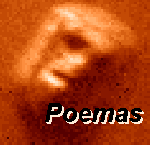



Andar Tras Mesoamérica : 5/10 essays |
Diary Calendar |
Mesopoem Index |
Archeology |
Metropolis and Countryside
In the twentieth century the cities of
all this world mushroomed into vast
metropolitan zones whose tentacles
extended farther and farther until some
of them actually merged into huge
megalopolitan sprawls of endless streets
and buildings. Mexico is no different,
except that at the heart of many of its
oldest towns this nation has preserved
much that is old and original from the
colonial times of Nova Hispania. The
metropoli of Zacatecas, Guanajuato,
Guadalajara, San Luis Potosi, Morelia,
Puebla, Oaxaca, Mérida, and so many
other cities - and thousands of small
towns - preserve a living wealth of old
baroque and neoclassical architecture.Many of the former palaces and convents
today hold fine museums and cultural
centers open to the public (usually closed
on Mondays). Visitors can clearly hear an
echo from the earlier mercantile age of
colonial slave metropoli, a more graceful
and brutal time which gave birth to our
(post) modern neo-colonial world.Mexico City is justly called the city of
palaces - yet this same capital is now a
monstrous cancer whose growth has filled
the huge valley where once a city of
islands, Tenochtitlan, floated upon
the shining lake of the Mextli moon,
a lake now nearly dessicated and replaced
by that new world megalopolis of twenty
million souls and no fresh air. The lake is
still there, crushed between airports, much,
much smaller, in only a tiny remnant of
countryside that once filled the valley.A similar process has transformed
Guatemala City, on the Ruta Maya, into
a smoggy megalopolis. But Guatemala City
does not have a historic downtown of colonial
treasures and palaces. To see its elder
heritage you must go to the ancient town
up on the hills, closer to the volcanoes,
the former capital city called Antigua.Around the metropoli of Mexico, the country
is still vast and wide -- although disturbed --
and there is time and space for many visitors
to savor and enjoy many different pastoral
realities by car, bus, bicycle or even foot -
hopefully this poet can klick you to some.Whether in cultivated valley or wild
mountain retreat, from forest to jungle
to prairie to desert, the open countryside
of Mesoamerica remains a spectacularly
fruitful stretch of beauty and power, an
eco-experience in a zillion different
shades and flavors of reality and dream.There is, however, another side to this
paired opposition of the metropolis and
the countryside. The historical context.In colonial times the metropolis was the
seat of royal Spanish authority and power
while the countryside was wild, held in
perpetual struggle between white-skinned
landlords and brown villagers. Between
the extremes mestizo culture was born. The
metropolis represented the larger focus of
Euro-Spanish civilization, royal law, legal
order, elite culture and social power, while
the countryside was untamed with revolting
roads, muleskinners, thieves, highwaymen,
outcasts from the city, and wild Indians. The
only islands of "civilization" - the haciendas -
were autocratic bubbles under command of
a local landlord or family who were the law
"out there in the hinterlands." Even the
words "in the city" and "outside the city"
encode this social reality and polar bias.To a certain extent, thanks to U.S. drug
money, that colonial legacy is still true
in the 21st century. "Out there" in the wild
mountains, drug lords are secretly raising
crops of opium and marihuana (they began
growing opium during World War Two
for the U.S. Army, it is said), hoping that
their peons can bring in the unlawful crop
before government helicopters swoop down
to destroy their profits. Travelers are strongly
advised to stay on main roads and inside
traditional tourist zones - and of course stop
for ubiquitous checkpoints - and NOT carry
drugs nor guns NEVER EVER NEVER .
Cities visited in writing:
(see also: Towns and People)
Tijuana
Ensenada
Countryside drawn in letters:
Baja California
Sonora
Sinaloa
Barranca de Cobre -- Copper Canyon -- explore the natural environment and the Tarahumara culture of Mexico's Copper Canyon for four weeks beginning on September 17, 2003 with the Adventure Learning Foundation (ALF), an Internet-based non-profit organization that provides curricula enhancing materials to educators based on online Adventure Learning Expeditions
-
Towns & People | Culture & Nature | Valley and Mountain | Ancient, Modern and Colonial Places |
Andar tras Mesoamérica : |
Diary Calendar |
Mesopoem Index |
Archeology |

|

|

|

|